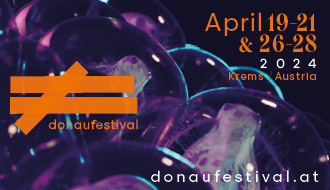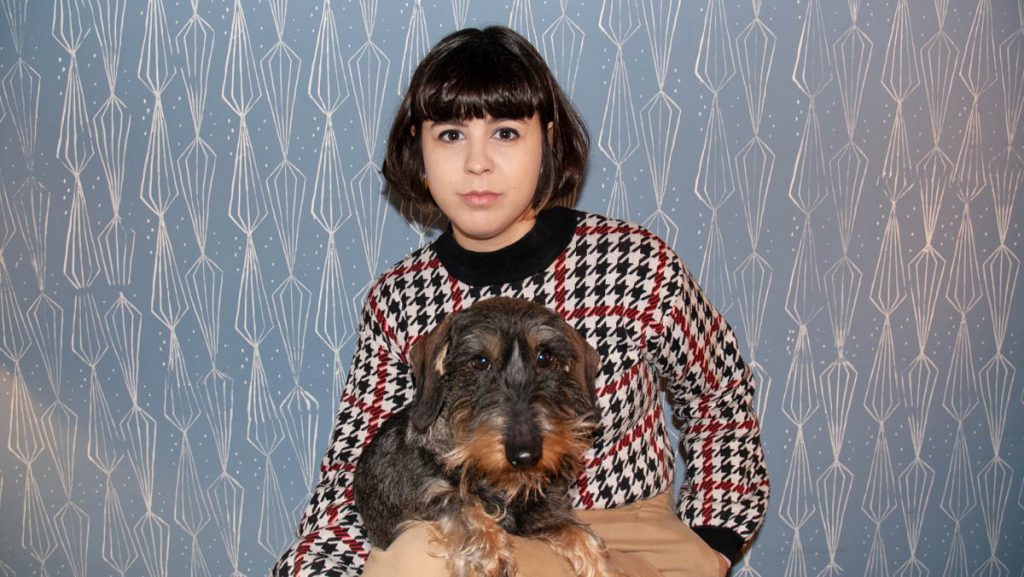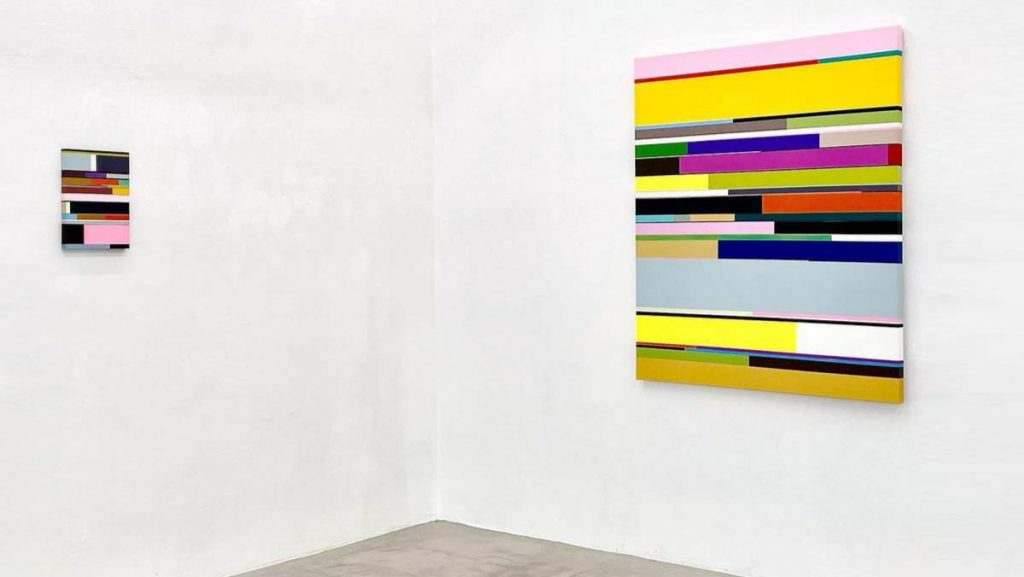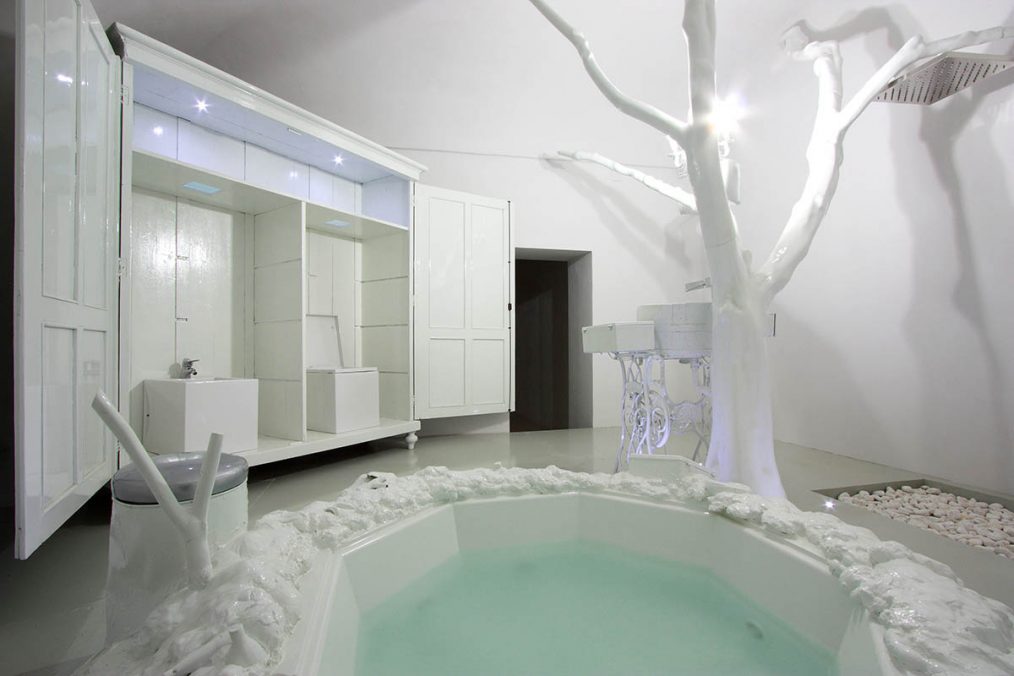
Umberto Di Marino, can you tell us something about you? How you came into the art world, and how happened that you decided to be a gallerist? What was the impact of the gallery seats, in the beginning in Giugliano in Campania and then in Naples?
Umberto Di Marino: The gallery was founded in 1994 in Giugliano, a city in the region of Campania, near Naples. Since the beginning I was interested in analyzing the context I found myself immersed in: the Neapolitan suburbs, marginal for urban planning policies, but central as a productive core for the rest of the city. It has always been a great source of inspiration for me, and my intuition was confirmed by all the artists I have collaborated with.
I was convinced of the possibility to avoid the usual stereotypes about these territories through contemporary art, transforming them, even momentarily, into a “crossroads of global thought.” I was and I am sure that we need to look with new eyes at the potential of the suburbs as realms of the possible.
I took part in the cultural life of the city, moved by an enormous passion. I traveled a lot trying to understand more of a world that did not belong to me, but whose incredible point of view kept grabbing my attention. The first steps I took were a consequence of this interest I had; I just wanted to have direct contact with some of the artists I loved most.
At the beginning of the 2000s, however, I began to review the organization of the gallery, which led me in 2005 to move out to Piazza dei Martiri in a central neighborhood of Naples. This event gave me a way for clarifying the vision for the future of the gallery.
The big city has allowed me to start new collaborations with international artists who have extended my interest in political and social issues, from the failure of Modernism to post-colonialism.
The city itself inspired me to escape from the boundaries of the gallery space; in fact, in the past few years I managed to organize several projects and exhibitions in public and private spaces across the city. And it is precisely from here that I started to imagine the future of the gallery, as a family business and a common good. Initially, my wife Maria and I were supported by our then ever-present assistant, Nicoletta Daldanise, with whom we still work occasionally. Today, however, we are supported by our sons Enzo and Giosuè. We are used to taking care of the same tasks, even if I prefer to keep for myself the relationship with artists and collectors.
Who was the first artist that the gallery was representing? How evolved the gallery story? Which were the first art fairs that you’re participating in?
U.D.M: I honestly don’t remember exactly who was the first artist represented by the gallery. I perfectly remember my first interests in the paintings of the “Anacronisti” or the “Nuovi Nuovi,” or the collaborations and exhibitions with Ugo Nespolo, Valerio Adami, Emilio Tadini, Lucio Del Pezzo, Concetto Pozzati, Bruno Ceccobelli, Gian Marco Montesano, Giuseppe Maraniello and Marcello Jori.
Artists I still thank today for the courage to believe in my idea of a gallery in the suburbs.
In the early 2000s, I started to think more seriously about the program of the gallery, taking part in the first fairs (Artissima, Arte Fiera and Arco Madrid). The result was a series of exhibitions around the relationship between art and landscape with young artists such as Eugenio Tibaldi, Antonio Serrapica, Federico Del Vecchio, Barbara La Ragione, Donatella Spaziani, Dafni & Papadatos, Zak Manzi, Satoshi Hirose and Alberto Di Fabio. The move to Naples subsequently marked the beginning of new collaborations with international artists such as Mark Hosking, Jota Castro, Sergio Vega, Santiago Cucullu, Francesco Jodice, Vedovamazzei, and at the same time led me to actively support the research of young artists such as Luca Francesconi, Marco Raparelli, Francesca Grilli, André Romão, Pedro Neves Marques, Ana Manso, Paloma Polo, Marc Breslin, Runo Lagomarsino.
The gallery has worked with many international curators, and sometimes also with curatorial offices. How important is the work with external curators, and what a gallery can attain from this joint work?
U.D.M: I’m always open to external collaborations, in fact, I’m pleased to work with several curators in order to enrich my perspective with new experiences.
I’m always open to external collaborations, in fact, I’m pleased to work with several curators in order to enrich my perspective with new experiences.
The results have always been surprising, and this was the case with group shows like Provenances curated by Latitudes in 2009 with Erick Beltrán, Simon Fujiwara and Jordi Mitjà, as well as The horizon line is here… curated by Lorenzo Bruni in 2010 with Elena Bajo, Ulla von Brandenburg, Runo Lagomarsino, Pedro Neves Marques and André Romão, and more recently with Every Breath you take, in 2018, curated by Alberta Romano with Giulio Scalisi, The Cool Couple and Eva Papamargariti.
What moves you in art? Do we change by living and working with arts? What are the common denominators of your artists?
U.D.M: I have always conceived the gallery’s program as an extension of my attitude. I always tried to express my passions through the point of view of the artists. As I wrote previously, at the beginning I was moved by a radical interest in the relationship between periphery and center, arts and landscape, especially through the research of young artists. This gave me the opportunity to develop multiple visions on my territory, and on other subjects, such as: the reinterpretation of a colonial past far back in time; the possibility to go beyond certain dichotomies typical of the modernist way of thinking; an anthropological, social, political, mystical and, sometimes, religious research on “human and non-human things.” I consider all these characteristics a common denominator of my artists and my gallery program.
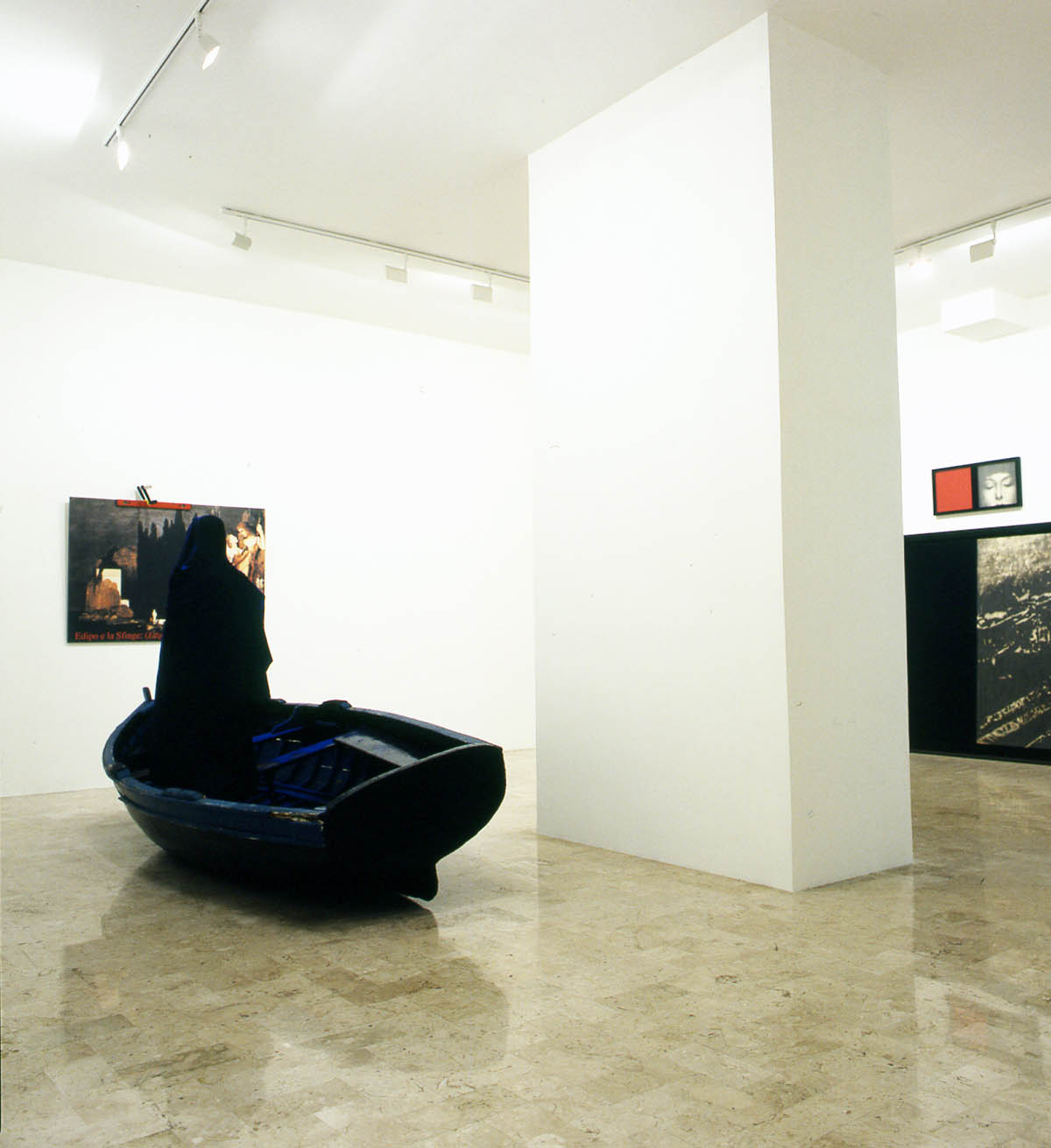
After many years of activity, I continue to feel the need for a continuous dialogue with my artists, in order to question myself over and over again. This is probably only possible with the intimate relationship I have built with them. We managed to create a dimension structured around the active involvement of me and my family in the production and conception of the work and even around our own petty quarrels. I have an honest and deep friendship with almost all of the artists represented by the gallery, supported by years of exchange of ideas.
I decided to avoid the „protocol“ of the detached gallerist, giving space to the possibilities coming from the experience of everyday life. My home has always been open to everyone and I believe that anyone who has experienced this environment had the feeling to be part of the family.


